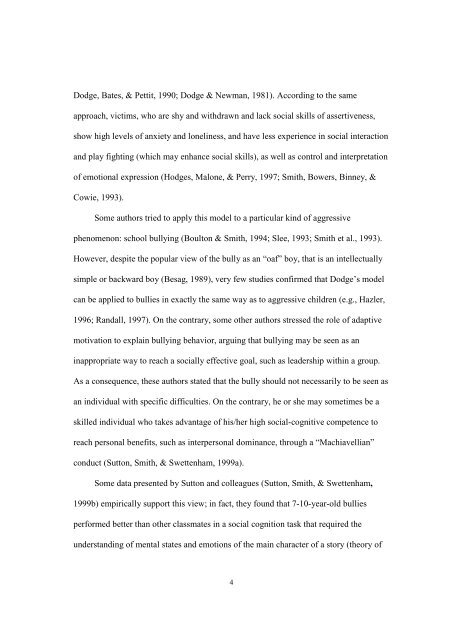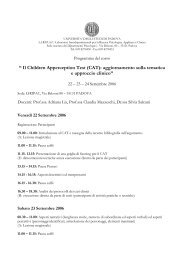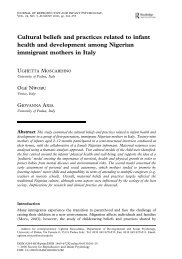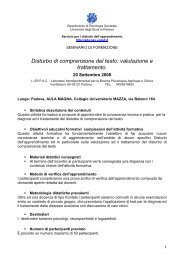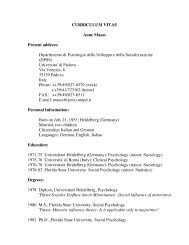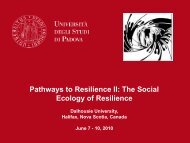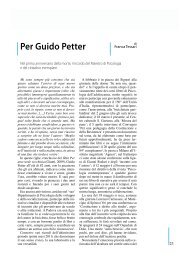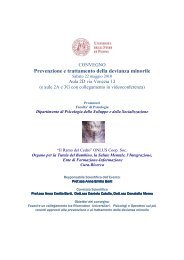Social cognition and moral cognition in bullying: What's ... - DPSS
Social cognition and moral cognition in bullying: What's ... - DPSS
Social cognition and moral cognition in bullying: What's ... - DPSS
You also want an ePaper? Increase the reach of your titles
YUMPU automatically turns print PDFs into web optimized ePapers that Google loves.
Dodge, Bates, & Pettit, 1990; Dodge & Newman, 1981). Accord<strong>in</strong>g to the same<br />
approach, victims, who are shy <strong>and</strong> withdrawn <strong>and</strong> lack social skills of assertiveness,<br />
show high levels of anxiety <strong>and</strong> lonel<strong>in</strong>ess, <strong>and</strong> have less experience <strong>in</strong> social <strong>in</strong>teraction<br />
<strong>and</strong> play fight<strong>in</strong>g (which may enhance social skills), as well as control <strong>and</strong> <strong>in</strong>terpretation<br />
of emotional expression (Hodges, Malone, & Perry, 1997; Smith, Bowers, B<strong>in</strong>ney, &<br />
Cowie, 1993).<br />
Some authors tried to apply this model to a particular k<strong>in</strong>d of aggressive<br />
phenomenon: school bully<strong>in</strong>g (Boulton & Smith, 1994; Slee, 1993; Smith et al., 1993).<br />
However, despite the popular view of the bully as an “oaf” boy, that is an <strong>in</strong>tellectually<br />
simple or backward boy (Besag, 1989), very few studies confirmed that Dodge’s model<br />
can be applied to bullies <strong>in</strong> exactly the same way as to aggressive children (e.g., Hazler,<br />
1996; R<strong>and</strong>all, 1997). On the contrary, some other authors stressed the role of adaptive<br />
motivation to expla<strong>in</strong> bully<strong>in</strong>g behavior, argu<strong>in</strong>g that bully<strong>in</strong>g may be seen as an<br />
<strong>in</strong>appropriate way to reach a socially effective goal, such as leadership with<strong>in</strong> a group.<br />
As a consequence, these authors stated that the bully should not necessarily to be seen as<br />
an <strong>in</strong>dividual with specific difficulties. On the contrary, he or she may sometimes be a<br />
skilled <strong>in</strong>dividual who takes advantage of his/her high social-cognitive competence to<br />
reach personal benefits, such as <strong>in</strong>terpersonal dom<strong>in</strong>ance, through a “Machiavellian”<br />
conduct (Sutton, Smith, & Swettenham, 1999a).<br />
Some data presented by Sutton <strong>and</strong> colleagues (Sutton, Smith, & Swettenham,<br />
1999b) empirically support this view; <strong>in</strong> fact, they found that 7-10-year-old bullies<br />
performed better than other classmates <strong>in</strong> a social <strong>cognition</strong> task that required the<br />
underst<strong>and</strong><strong>in</strong>g of mental states <strong>and</strong> emotions of the ma<strong>in</strong> character of a story (theory of<br />
4


